In this article, we will discuss the Project Management Framework that we apply in the Project Management Excel Templates available from indzara.com. Projects can be of different types and Project management techniques also vary with the type of projects. The simplified framework we will see now applies to most common project scenarios.
PROJECT MANAGEMENT FRAMEWORK VIDEO
WHAT IS A PROJECT?
Let’s begin by defining a Project. The characteristics of a Project are below.
- A project has a specific end goal.
- A collection of tasks has to be completed in order to achieve the project goal.
- Each task may take different amount of time/work, cost and skill
- A collection of resources is available to perform work on these tasks

Examples of a Project: Building a home, building a software product, fixing a broken machine. It can be big or small, long or short, expensive or inexpensive, easy or hard.
Project Management is the act of achieving the project goal by using the resources available accounting for all constraints and handling any unexpected events along the way.
Project Manager (PM) is the leader of a project.
2 STAGES OF PROJECT MANAGEMENT
We can see Project Management or the role of a Project Manager in two stages: 1) Planning and 2) Management.
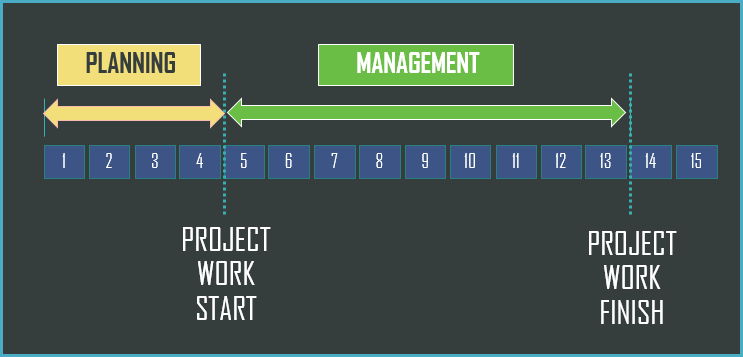
The first stage is to plan the project ahead of time and have a clear idea of the project before the project work begins. For example, if our project is to build a home, then we want to have a clear project plan as to how we will build before we actually start building.
The second stage starts when the project work actually begins. This is where the PM manages the project to completion effectively and efficiently, meeting the project goal.
PLANNING STAGE
During the Planning Stage, the objective of the Project Manager is to have answers to these questions.
- Can the project be completed by our preferred date? When will it complete?
- How much will it cost?
- How efficiently will we use our resources?
- Who will work for how many hours on which task on a given day?
Answering the last question will help us answer all the others. The answer to the last question is the ‘Schedule’.
WHAT IS A SCHEDULE?
A schedule lays out how we will complete the work needed using the resources available.
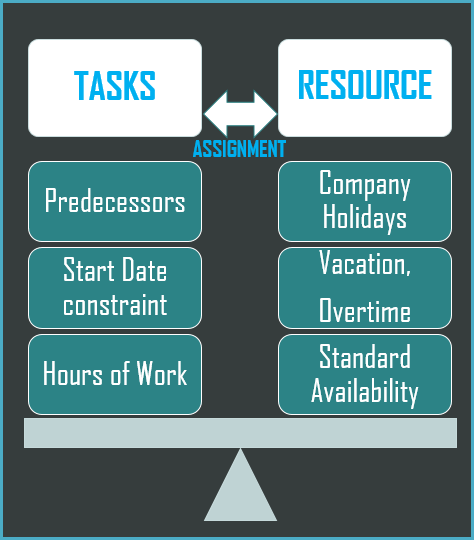
On one side, you know the work (referred as Tasks in the image) that needs to be done. We factor in the hours of work needed, any external constraints on starting a task, and dependencies between tasks. For example, you may not be able to start a task before another task is complete.
On the other side, you have the resources that are capable of performing that work. They have their standard working hours per weekday. They may have vacation and overtime. The company may have holidays during which work will not be performed.
On top of these, the PM assigns each task to one of the resources available based on skill. Given all this input, a schedule is built.
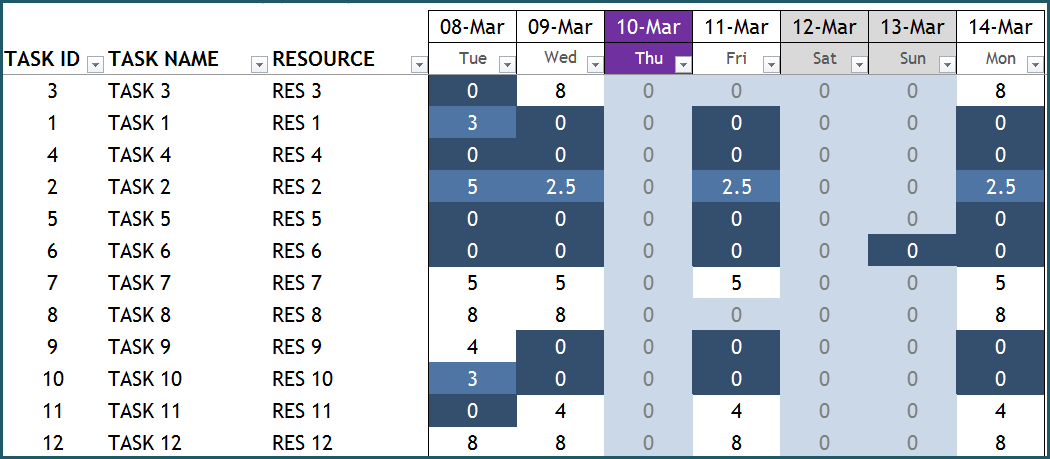
Using the schedule, we can then calculate all relevant project metrics such as Project Finish Date, Cost and Resource Utilization (a measure of how efficiently they are utilized). It may take a few iterations to land on a schedule that is acceptable. For example, in the first iteration, the project timeline might be too long. In the next iteration, the cost might be too high. The levers a Project Manager has are
- List of Resources
- Availability of those resources (standard work hours, overtime, vacation)
- Assignment of resource to task
- Scope of Task(s)
Once Project Manager lands on an acceptable schedule, we have answers to our original questions. The results can be shared in a Project Report with the Project sponsors to get approval. Once approved, what we have is a project plan. We will call this as Baseline Plan.
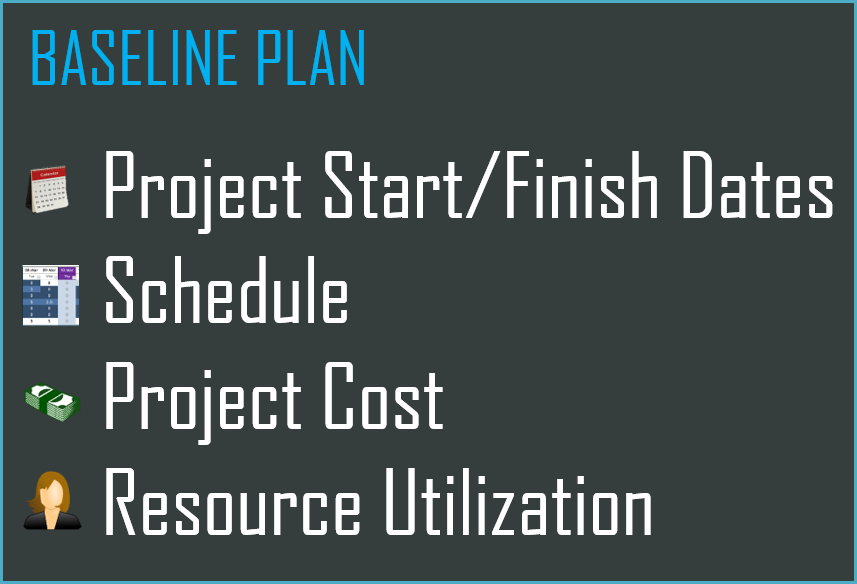
This will include key dates (milestones), the detailed schedule, cost estimates and resource utilization rates.
Now, we wait for the Project Start Date to begin actual work, and our planning stage ends.
MANAGEMENT STAGE
From the day actual work begins, we enter the Management stage. The first and most important activity here is to track the actual work performed. Only then we will know if our plan is being executed. The frequency of tracking may depend on the scale of project. It could be daily, for example.
This tracking allows us to monitor the progress of the project towards our goal and also monitor if we are sticking to our baseline plan. The Project Manager monitors the progress using reports and shares with project team and sponsors regularly. The reports will clearly represent what % of the work has been complete and how much more needs to be done. Clear and timely communication is an important characteristic of a Project Manager.
If actual work was performed exactly as planned, the Management stage becomes very simple. The reality is that many things may not go according to the baseline plan.

Here are some reasons:
- Our actual work performed is less (or more) than Planned
- Planned Work Estimate was incorrect
- Scope of work has changed
- Resource Cost is different than planned
- Resource availability has changed
These factors may make our Baseline Plan not valid anymore. The Project Manager has to build a new plan to handle all the new challenges and factors. Let’s call this plan the Current Plan.
CURRENT PLAN
The Current Plan takes into account what work has actually been done so far, and plans the rest of the project, given the changed inputs such as resource availability and work estimates.
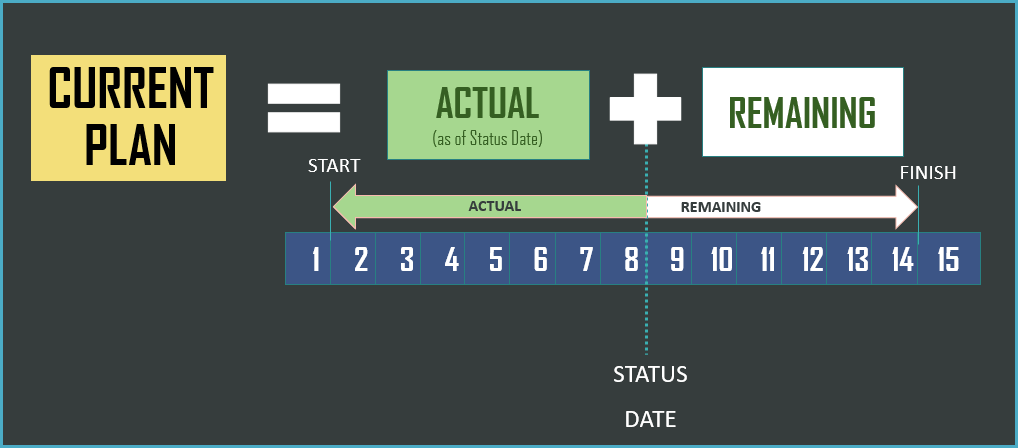
The Project Manager can increase resource availability and/or reduce scope of Tasks. Even using all the levers available, it may happen that the estimated project finish is later than in our Baseline Plan. In other words, the project will be delayed. It is to be noted that the Project Manager received approval earlier for the Baseline Plan and if the Current Plan deviates in cost or timeline significantly from the baseline plan, then a new approval may be necessary.
Here’s a quick overview of the difference between the two plans.
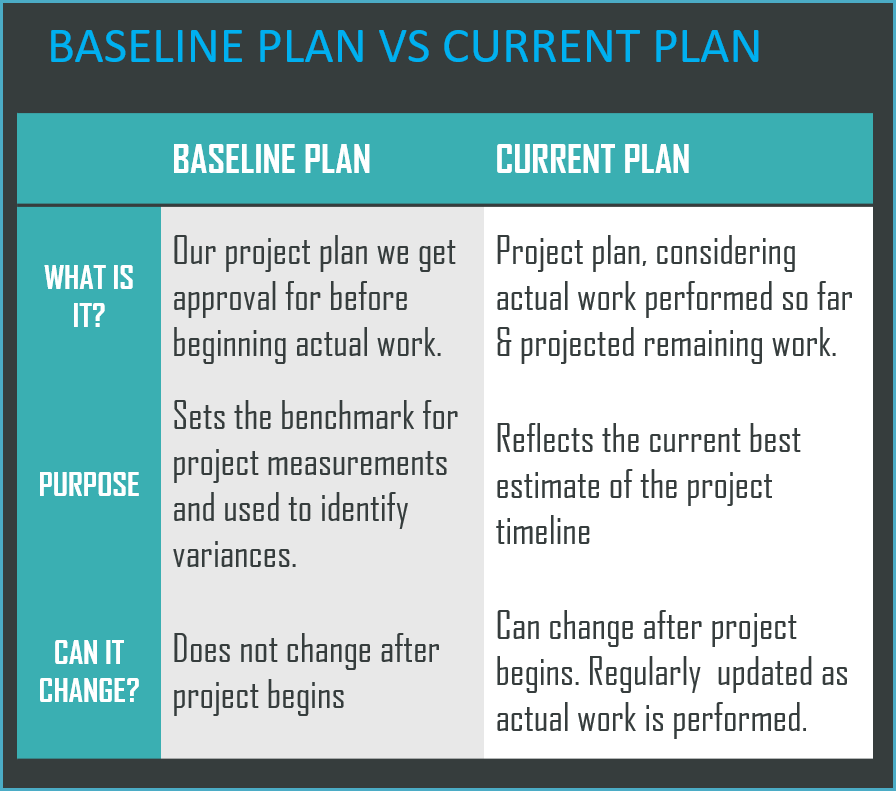
Using the new Current Plan, the project moves forward. It is a continuous process. This Current Plan will be updated regularly based on actual work performed and any changes that may happen with the inputs. Our reports will tell us how the current plan is progressing and is compared with the baseline to identify variances. Project Manager will continue to share these reports with the sponsors and the team as necessary.
It is possible that the schedule has to be updated or rebuilt a few times during the course of the project. Finally, when all the work is completed, the Project Manager finalizes the Project Report and shares.
This wraps up our introduction to a simple Project Management Framework. In future articles we will go further in depth into specific components of this framework.
